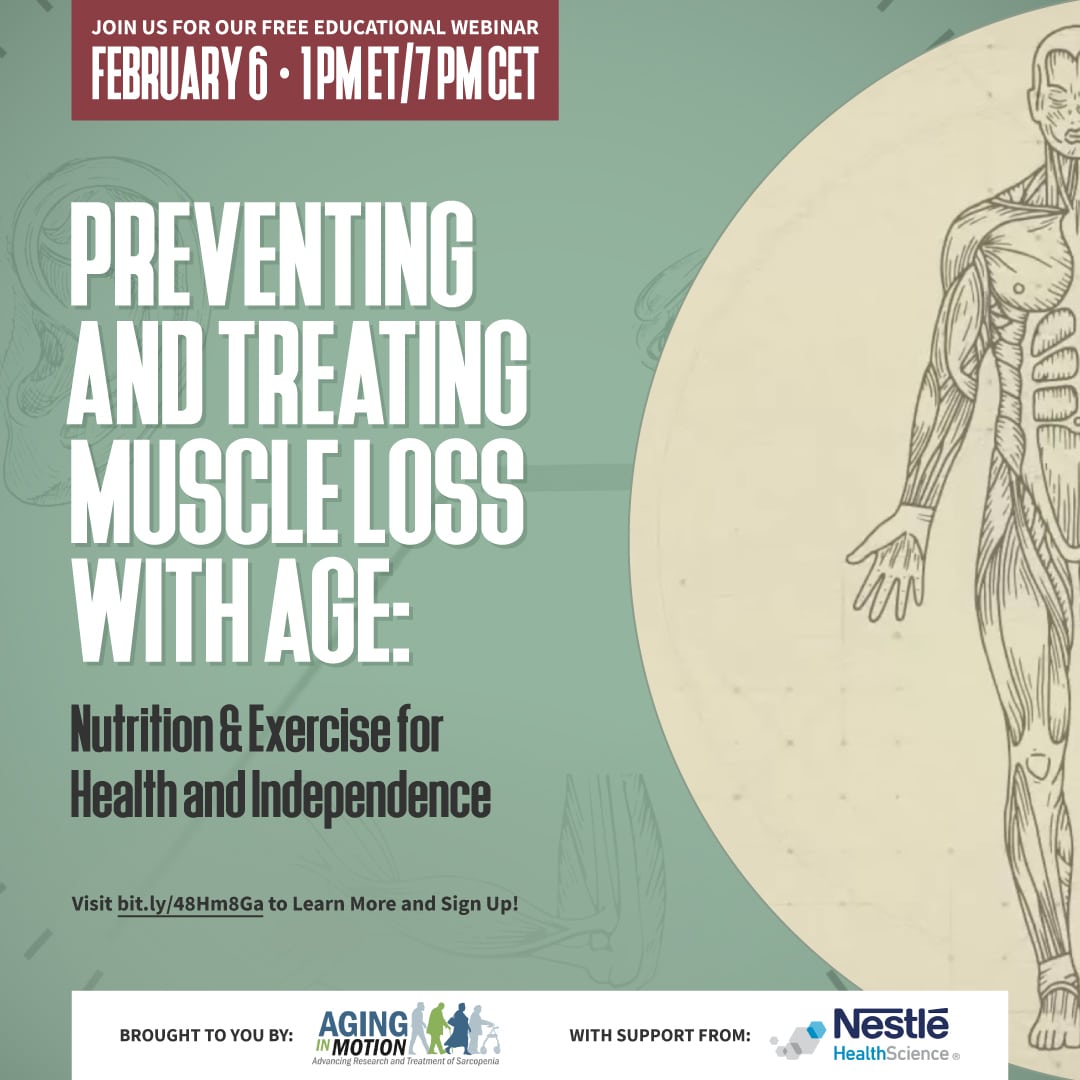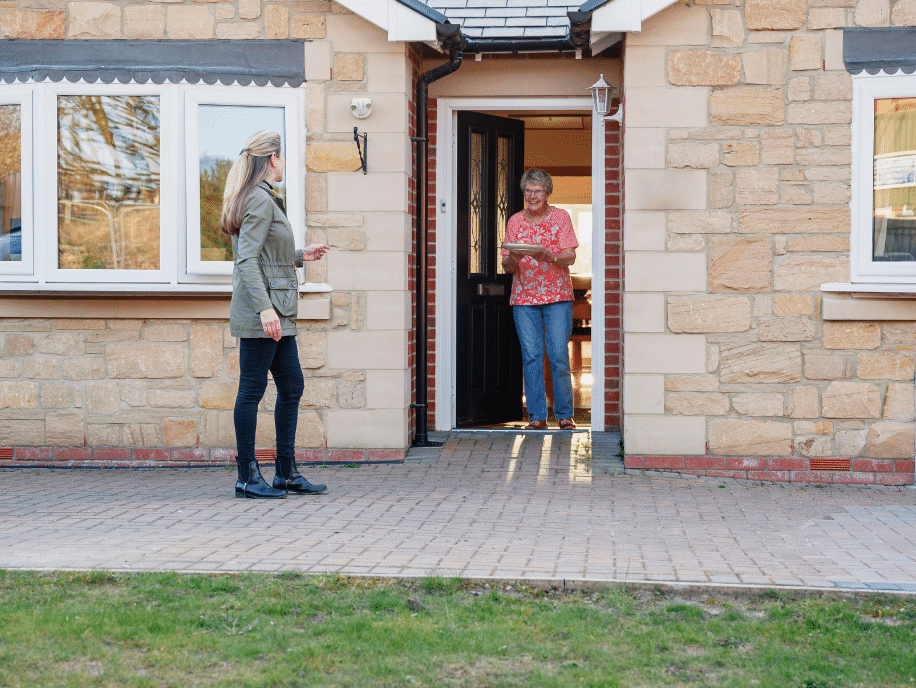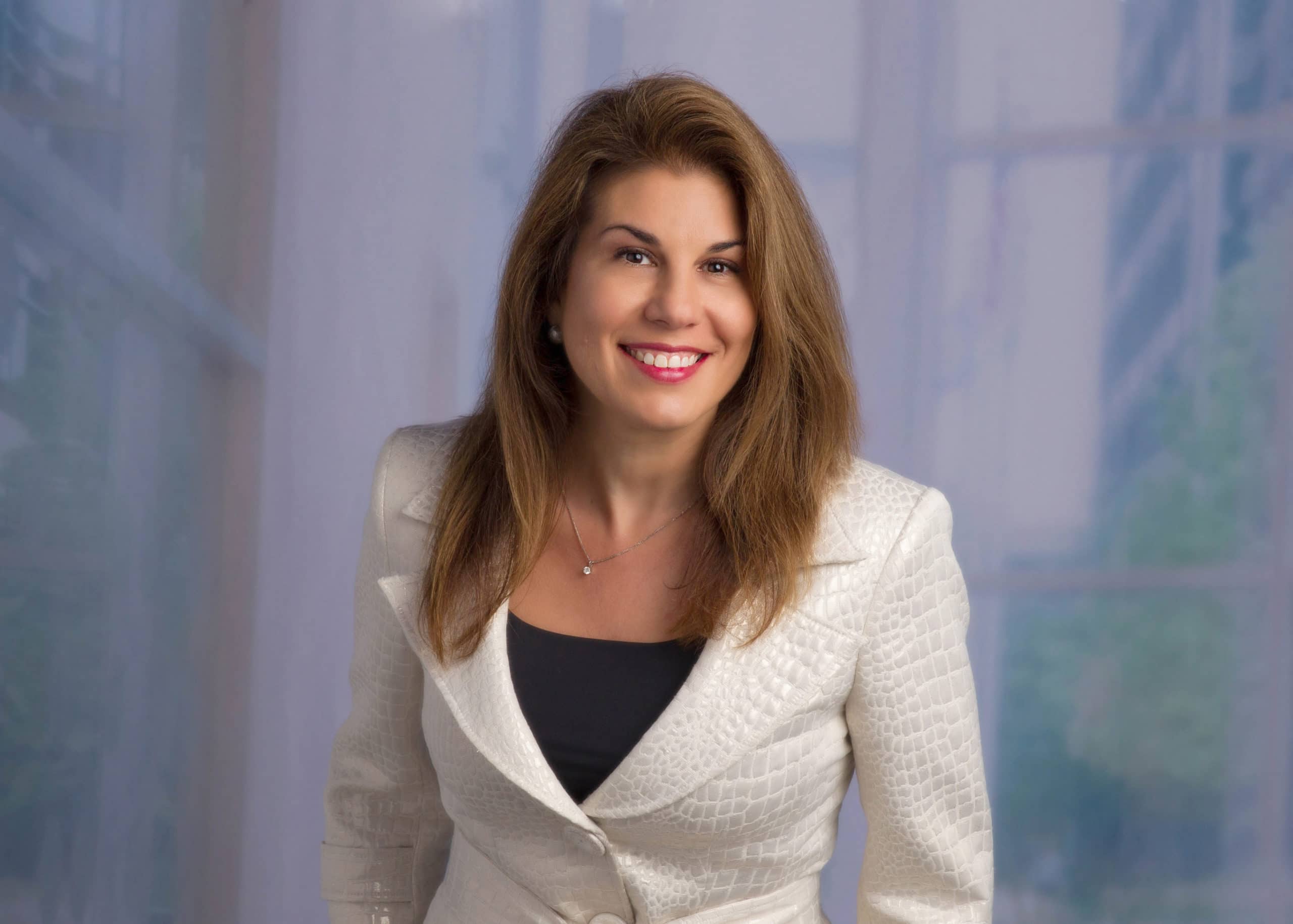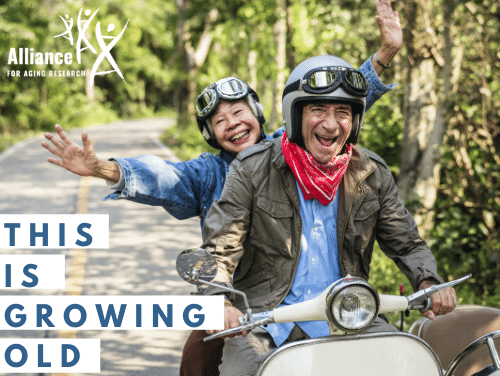Listen and subscribe to This is Growing Old, a podcast from the Alliance for Aging Research
Show Notes
October 4 through 8 is Malnutrition Awareness Week. Joining Alliance Vice President of Health Education and Advocacy Lindsay Clarke is Gail Cresci, PhD, RD, President of ASPEN, an organization dedicated to improving patient care by advancing the science and practice of clinical nutrition and metabolism. Gail talks with Lindsay about recognizing the signs of malnutrition and how we can fight against it as we age.
Learn more about Malnutrition Awareness Week: http://www.nutritioncare.org/maw/
Watch the Alliance for Aging Research’s films on nutrition: https://www.agingresearch.org/health-topic/nutrition/
Episode Transcript
Lindsay Clarke:
Hi everyone, and welcome to This is Growing Old, the podcast all about the common human experience of aging. My name is Lindsay Clarke and I’m the Vice President of Health Education and Advocacy at the Alliance for Aging Research. We’re releasing this episode right in the middle of Malnutrition Awareness Week, which takes place October 4th through 8th. If your listening to this when it first airs, or somewhere down the road, we know you’ll find it interesting and helpful, so thanks for joining us. Here with me today to talk about malnutrition is Gail Cresci. Gail is president of ASPEN, an organization dedicated to improving patient care by advancing the science and practice of clinical nutrition and metabolism. Gail, thank you so much for joining us today.
Gail Cresci:
Oh, thank you so much for having me. My pleasure.
Lindsay Clarke:
Yeah, it’s great to have you. I know that a lot of people really don’t think of malnutrition as something they need to worry about. Can you tell us more about what malnutrition is, and who’s at risk?
Gail Cresci:
Yes, absolutely. And you’re absolutely right. I think, we tend to think of malnutrition, when we think of people in underdeveloped countries, we see pictures of children who are just wasting… Or elderly. And, that is a form of malnutrition, but there’s also malnutrition right in front of our eyes. And, we tend not to think about it because someone may not have that visual of being, having a wasting syndrome. And so, malnutrition is really when there’s inadequate nutrient intake, or protein intake, or energy intake. And, as a result of that, we can see a wasting type effect, but we also see that these individuals have increased rates of infections, infectious complications, increased hospital length of stay if they end up in the hospital, more likely to get sick. And, why we tend to overlook it is even in people who may be taking an adequate energy, or overabundance of energy, so in obesity, but a lot of these people are not eating adequate nutrients. So, the quality of their intake is not good. So, they could also have a lot of micronutrient deficiencies that go undetected. And so, that’s also a form of malnutrition.
Lindsay Clarke:
So, I’ve heard it referred to as a hidden epidemic in the U.S. And, I’m really glad that you pointed out that a lot of times people think of it as something that doesn’t happen here, but it’s actually quite common. Can you talk about what are some of the factors that contribute to malnutrition, and from the perspective of the Alliance for Aging Research, why is it increasingly common with age?
Gail Cresci:
Absolutely. So, really having inadequate access to healthy, good quality food is one of the big concerns. And then, in the elderly, in particular, they may have access to the food, but for some reason they’re not taking it in their bodies, they’re not eating. So they may have a swallowing disorder, they may have impaired cognition, or functional impairment, they may be depressed. So, these are all factors. And then, they may have difficulty swallowing. So this is also quite common. And so, they’re not able to think to get the adequate nutrients in. And then, they could also have difficulty with absorption of the nutrients. And so, this can then contribute to the malnutrition that may occur, on top of, if they may have some chronic diseases, other medications they may be taking that are interfering with the ability for them to optimally utilize the nutrients.
Lindsay Clarke:
So Gail, why should people be worried about malnutrition? What are some of the potential consequences of malnutrition?
Gail Cresci:
Well, people with malnutrition, no matter what age you are, when we have improper nutrition, our immune system starts to fail. And so, you’re at higher risk for and infections. And then, also if you do get some illness, you are more likely to have more complications that result from that illness. If you end up in the hospital, you’re more likely to have a prolonged hospital length to stay. And, upon discharge, you’re also more likely to come back into the hospital in a quicker timeframe. Also, it can also contribute to the cognitive decline, because nutrition is so important, all these micronutrients, our vitamins and minerals, they’re really important components of all the biochemical pathways in our body. So, when you have deficiencies in these, you view a chain. One of the links are missing, so you don’t have a proper connection. And so, some of these pathways can start to fail.
Gail Cresci:
And we’re starting to see and get the connections with interactions with the brain, as well as just overall function. So, with muscle wasting, we have decreased muscle function, which increases association with frailty, which can increase risk of falling. All of these things are just impacted on each other, but nutrition has an underlying foundation of all of these different factors, because it’s so important with everything going on in our body.
Lindsay Clarke:
Right. So, it seems like for older adults that malnutrition can really lead to a lot of decline, and complications, and things that we sometimes think of when we think of aging, and it makes it so important to detect it and diagnose it. So, how is malnutrition detected and diagnosed?
Gail Cresci:
The best way to diagnose malnutrition and detect it, is what we call… We ask questions, and we do a physical exam, and I educate medical students on this all the time. And, I ask them, “When you’re doing your physical diagnosis exam on your patient, do you ask some questions about their nutrition?” And they’re like, “No.” I said, “Why? Why not?” I mean, so simple question, ask someone, have they had any changes in their eating patterns? Do they have any difficulty chewing and swallowing, because of course that’s going to impact to what they can actually take in, in their body. Have they had any unintentional weight loss. So, unintentional, and it’s really in a certain timeframe. So, it’s a percentage of body weight loss in a month, up to six months, really put someone at high nutritional risk.
Gail Cresci:
Then when we do physical exam, we look for, if there is any muscle wasting, any fat losses, and subcutaneous fat losses. And then we look for, if let’s say with your diet history, you find that, “Oh my gosh, this person doesn’t eat any fruit or vegetables at all.” So, they’re missing a lot of vital vitamins and minerals in their diets. So, then you can start looking for different signs and symptoms of vitamin and mineral deficiency in that individual, when you’re doing your physical exam, are they having hair loss? Do their nails break easily? Do they have cracking fissures around their mouth, and their tongue? All of these things are signs and symptoms of nutrient deficiencies.
Lindsay Clarke:
So, if I were to have any of those, or know someone who’s experiencing those symptoms, clearly they should bring them up with their healthcare professional. But, it seems like they should also make sure they’re asking them questions about their nutrition, that they’re having those conversations at their visits.
Gail Cresci:
Exactly. And, I think a lot of times people tend to just… When we go to see the doctor, we’re rushed in how much time we can spend with the doctor. But bringing up these important parts, and if an elderly person’s going to an appointment with a caregiver, it’s really important because then that can caregiver oftentimes is a person that’s sharing this extra information, telling, “Well, you’re only eating about half of the food that’s on your plate.” Or, “You really stopped eating your vegetables.” Or, “I notice you’re not chewing your food. Do you…” So, simple things like that, really can start to… And it’s over time that these things start to develop. And this is more in the outpatient ambulatory care setting. But, if in the setting of where there might be an infection or inflammation going on in the body, all of this process is accelerated. And that’s why in the hospital setting, or maybe just coming out of the hospital and going to a rehabilitation center, where some of these things can really be exacerbated pretty quickly.
Lindsay Clarke:
So what happens if someone has a diagnosis, how is malnutrition treated?
Gail Cresci:
So, it depends on what’s going on with the individual. So, typically the dietician will come, and see the patient, and develop a nutrition care plan for that patient. So, depending on, if they have a chronic disease, taking in consideration any limitations that they may have, restrictions in their diet, but trying to still come up with a healthy eating plan for them. If the patient is unable to self consume, at least 60% of their nutritional needs on their own, then they’d be a… And they’re at risk for malnutrition. Then they’re a candidate for what we call specialized nutrition support therapy, where they may be fed through a feeding tube, or get extra oral supplements to supplement their diet, or if they can’t tolerate being fed in their intestinal tract at all, for whatever reason, they may require intravenous feeding. So, all of those different care plans are taken into consideration, based on what’s going on with the patient.
Lindsay Clarke:
Well, so there’s a lot of factors that contribute to malnutrition. So, I realize, this isn’t a simple answer, but can it be prevented? And if so, how?
Gail Cresci:
Yes, and no. I mean, that’s the big question, right? We don’t want it to happen. The best way to prevent, of course, if everyone eats great, and takes care of any chronic disease, and all of those things. But, we know that’s not necessarily reality. So, when someone comes, let’s say, into the hospitalized setting, and they’re at risk. So, we screen patients on admission to the hospital for risk for malnutrition. That usually comes with two simple questions. I already mentioned them, “Have you had any unintentional weight loss?” And, “Do you have any difficulty chewing and swallowing.” That will immediately trigger some intervention with the dietician? And then, the dietician may come and do further investigation and assessment of that individual. But a lot of patients may say, “No.” I mean, not have any of those problems going on. But then, what can happen is what happens medically to the patient in the hospital.
Gail Cresci:
And so, in particular, my area of practice is critical care. So a patient ends up in the intensive care unit. So now, I think of COVID patients, who end up in the intensive care unit, they have so many other things going on with them to manage their medical care, that often nutrition gets pushed aside. And it’s the last thing that gets taken care of for the patient. And oftentimes, patients can go for days without being fed. And, this is where we really are pushing with the Malnutrition Awareness Week to help people to raise awareness, that we have to get nutrition on board early. We know that it’s very important to start, even in those critically ill patients that have so many other things going on, they have to have nutrition, and it’s ideal within 24 to 48 hours of admission to get something going.
Gail Cresci:
And so, we’re trying to raise the awareness, not only amongst ourselves, but that’s preaching to the choir. But to give other nutrition focused clinicians resources to help support that awareness at their institution and in their community that, “This is important.” And, to get that word out to administers, and with billing, and everything that, “This is so important.” And actually, if somebody is adequately diagnosed with malnutrition in a hospitalized setting, hospital systems have realized that this increases their risk of hospital length to stay, increase hospital cost, that they actually give more reimbursement for someone who may be malnourished to help. Because we know that their costs are going to be higher, even though we’re trying to do intervention and get things going early to prevent it from developing any further, and hopefully reverse it if we can.
Lindsay Clarke:
Clinicians are clearly a target audience for Malnutrition Awareness Week. Who are some of the other audiences? And for those that are listening, who aren’t clinicians, but who want to get involved, can you tell folks how they can get involved?
Gail Cresci:
Yeah. So, other ways we have with malnutrition awareness week. And by the way, the theme of it this year is, “Nutrition is a human right,” which that really means that as a human right, nutritional care is intrinsically linked to the right to food and the right to health. So, we’re really in collaboration globally actually, using this terminology to help get the word out across the globe. But really, trying to not only, like you said, the healthcare professionals, but also consumers and patients to make patients aware and their caregivers that they need to ask for nutrition. So, if they’re in the hospital and let’s say, your loved one is not getting fed, that’s your right to be fed. So, to bring it up with your healthcare provider, “Hey, why aren’t you feeding my loved one here.” Or, “I have this chronic disease, and I’m having issues with losing weight. Can I go see a dietician to help me work out a meal plan, to help me work through this?” And so, to ask for that, because oftentimes, it’s not that people don’t want to feed you, it’s that it gets overlooked.
Gail Cresci:
And so, to bring that awareness to the forefront, to the healthcare team, to make sure that you are getting addressed. So, it’s taking charge of your own nutritional care, not wait passively for someone to bring it up, just say, “Hey, they need to eat. They need some nutrition.” It’s as simple as that. And then, follow up from there.
Lindsay Clarke:
Yeah. It’s such an important point, and something that we’re always trying to underscore in our resources is that we need to be our own advocates and we need to be advocates for our loved ones. So, I’m really glad you touched on that. I know that sometimes though malnutrition really is a lack of access to healthy and affordable food. So, for those that may be having access troubles, what services should people know about that can help?
Gail Cresci:
Yeah. I think, it’s really going to depend on where you reside. There are many programs with the federal government, actually, that there’s different programs, there’s a program for Women, Infant, and Children. You’ve heard of those, the WIC program. There’s the SNAP program, which is Supplemental Nutrition Assistance Program. Also, for seniors there’s one program termed Senior Farmer’s Market Nutritional Program, which actually is for low income seniors to receive coupons that can be exchanged for eligible foods at farmer’s markets, or roadside stands, or other community supported agricultural programs. There’s things like, Meals on Wheels, that is also a nice program that’s available. And, even within your community, there may be programs. So, different churches, or other resources in the community may offer different types of programs with food and delivery systems. So, it’s really a matter of looking at governmental sources, but also, within your own social network, what type of assistance programs may already be in place in your community.
Lindsay Clarke:
That’s great. Thank you. Switching gears a little bit. I wanted to ask you a couple of questions that we ask all of our podcast guests. And the first is when you were a kid, what did you imagine that growing older would be like?
Gail Cresci:
Oh, wow. You know what? I don’t know that I ever of thought about growing older. I just think about what I’m going to be when I grow up, more of that thing. But, I don’t know that I ever… You looked at your parents, and your other teachers, and other role models. Of course, I always thought they were so old. When you’re a kid, you think that they’re so old. And now, it’s like, “Oh no, they were younger than I am now.” So, I don’t know that I really thought about that. I mean, I’m fortunate, I have a very active lifestyle. I like to do a lot of exercise, I do triathlons, I do biking. And so, I don’t know. I guess, I never thought that I wouldn’t be doing those things. It’s just a part of who I am. But, I don’t know. It’s a tough question.
Lindsay Clarke:
Yeah. There’s people who gave a lot of thought to it. They might have had people in their lives that made them think hard about what growing older looked like. And then, there’s some of us that just it didn’t occur to us, right? We thought about the milestones, but we didn’t really think about what it would be like for us. But to that point, what do you enjoy most about growing older now?
Gail Cresci:
Oh, I think, I enjoy that I’m still able to do things… That I can do it now, I’m in charge, right? I can do things that I want to do and make time for it. I think, as you grow older, you have more insights, more wisdom, more knowledge. And so, I approach things differently than I did when I was younger, where I used to just do it. But now, put a little bit more thought, more mindfulness into, “Hey, you know what…?” So, I’ll bring in the context of exercise, it’s like, “Oh, my body doesn’t recover like it used to recover. It takes a lot longer to recover. I have to do more preventative things now, more stretching.” I do yoga, I do meditation, all of these things to help me balance everything in my life. And, I didn’t do that when I was younger. You just went, and I just did it. And, didn’t think about that.
Gail Cresci:
And then, trying to instill those things into my children, who are grown, in their young twenties now. And, of course they’re now at where I was, at that age. And so, trying to instill that wisdom that I’ve obtained without them getting turned off, by how they don’t always want to listen to their parents. But yeah, so I guess I just enjoy that. That I have a little bit more insight into things. And I tend to listen to older people now. A lot of my good friends are… And, who I really enjoy talking with are 15, 20 years older than me. And I really enjoy just hearing what they have to say about whatever, whatever it may be. And, if it’s a professional thing, if it’s a personal thing, if it’s just anything, I just enjoy that so much.
Lindsay Clarke:
A lot of people have commented on the wisdom that comes with aging, no matter what our age is, I think that’s something we’ve heard from a lot of people. So, I want to thank you for joining us today and sharing some of your wisdom. And, for being on This is Growing Old.
Gail Cresci:
Thank you so much for having me on this important podcast.
Lindsay Clarke:
We’re so thrilled to be able to share a little bit about malnutrition.
Lindsay Clarke:
So to everyone, thanks for listening to This is Growing Old. Our intro and outro music is City Sunshine by Kevin MacLeod. Please subscribe if you’re enjoying the show. Thank you, and have a great day.






